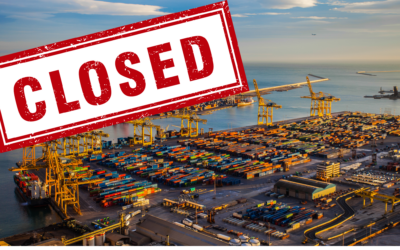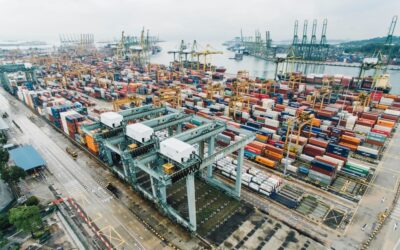As a freight forwarder, I’ve had a front-row seat to the challenges that equipment imbalance can create for exporters and importers. It affects us all, and it’s important to know what to expect should it happen and how to deal with such an eventuality.
What Is Equipment Imbalance?
Before we start talking about equipment imbalance, we first have to define what it is. This term refers to a situation when there is an unequal distribution of shipping containers between origin and destination ports. Reasons this can happen usually center around supply and demand, which is exacerbated by several situations.
Causes of the Imbalance
As supply and demand changes, that leads to a change in trade patterns. Essentially, more shipping containers are being exported than imported. When this occurs, empty containers stack up at a port, creating a backlog. Carriers may have to relocate containers to even out the equipment imbalance. Of course, they charge for the service, which is called an equipment imbalance surcharge, and it can range between $150 and $500 per container. This fee is often relegated to the consignee, although it can be paid by the shipper. When working with a freight forwarder, the fee is passed from the shipping line to the forwarder and on to the importer or exporter.
Other reasons for an equipment imbalance may include economic downturns, as we saw in 2008 and just recently during the pandemic, and natural disasters. In the first case, companies may reduce their shipping activity, leading to an excess of empty containers at some ports and not enough at others. Natural disasters can destroy shipping containers, which then results in an equipment imbalance.
Effects of Equipment Imbalances
When there are too many shipping containers in some ports and too few in others, there are negative effects for exporters as well as importers. In addition to the aforementioned fees shipping lines may charge to transport empty containers, they may also need to increase their rates overall to account for the imbalance. Shipments can be delayed, as we’ve seen recently around the globe. There’s also a risk of damage to empty containers that sit at ports too long.
How to Prepare for Potential Issues
Working with a freight forwarder is the first line of defense for importers and exporters, as they know what the upcoming situation looks like and can properly plan alternatives. Planning is key when it comes to dealing with potential equipment imbalances to ensure access to empty containers. Sometimes, patience and flexibility are important to create positive outcomes. When the situation is out of the control of freight forwarders and even the shipping lines, as it was at points during the pandemic, a positive attitude and a bit of patience can make a world of difference.
My Opinion on the Topic of Equipment Imbalance
I believe that the global shipping market is going to correct itself in the coming years. Shipping lines received a premium over the last few years due to factors such as the pandemic and the Suez Canal blockage; however, as the global economy recovers and trade patterns normalize, I expect that shipping rates will come down.
This is good news for exporters and importers. It means that they will be able to ship their goods at lower costs. It also means that they will have more options when it comes to shipping lines and services.
If you are an exporter or importer, I recommend that you start planning now for the future. Work with a freight forwarder (I suggest Cyclone Shipping) to develop a shipping strategy that will help you to mitigate the impact of equipment imbalance and to take advantage of lower shipping rates.




